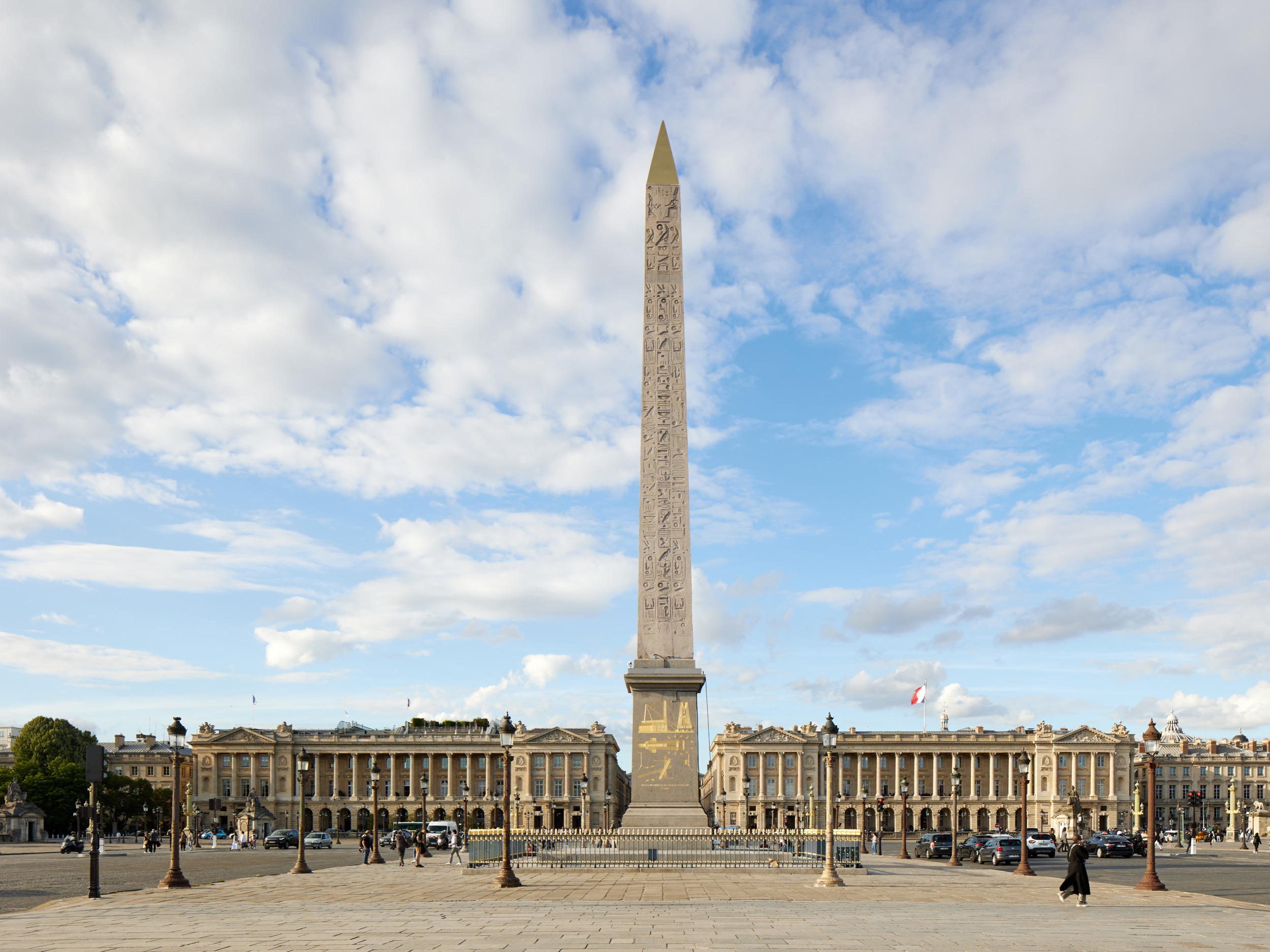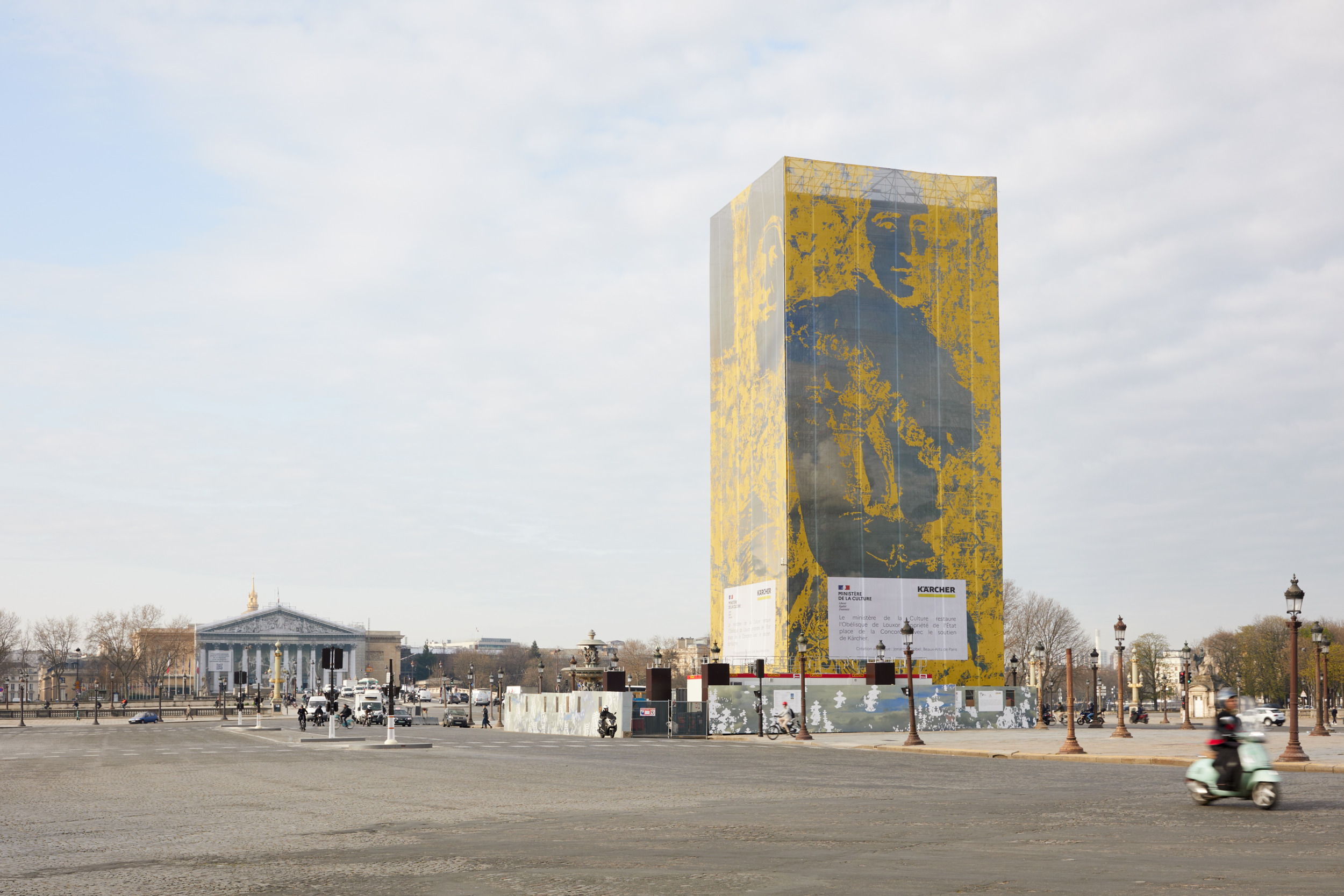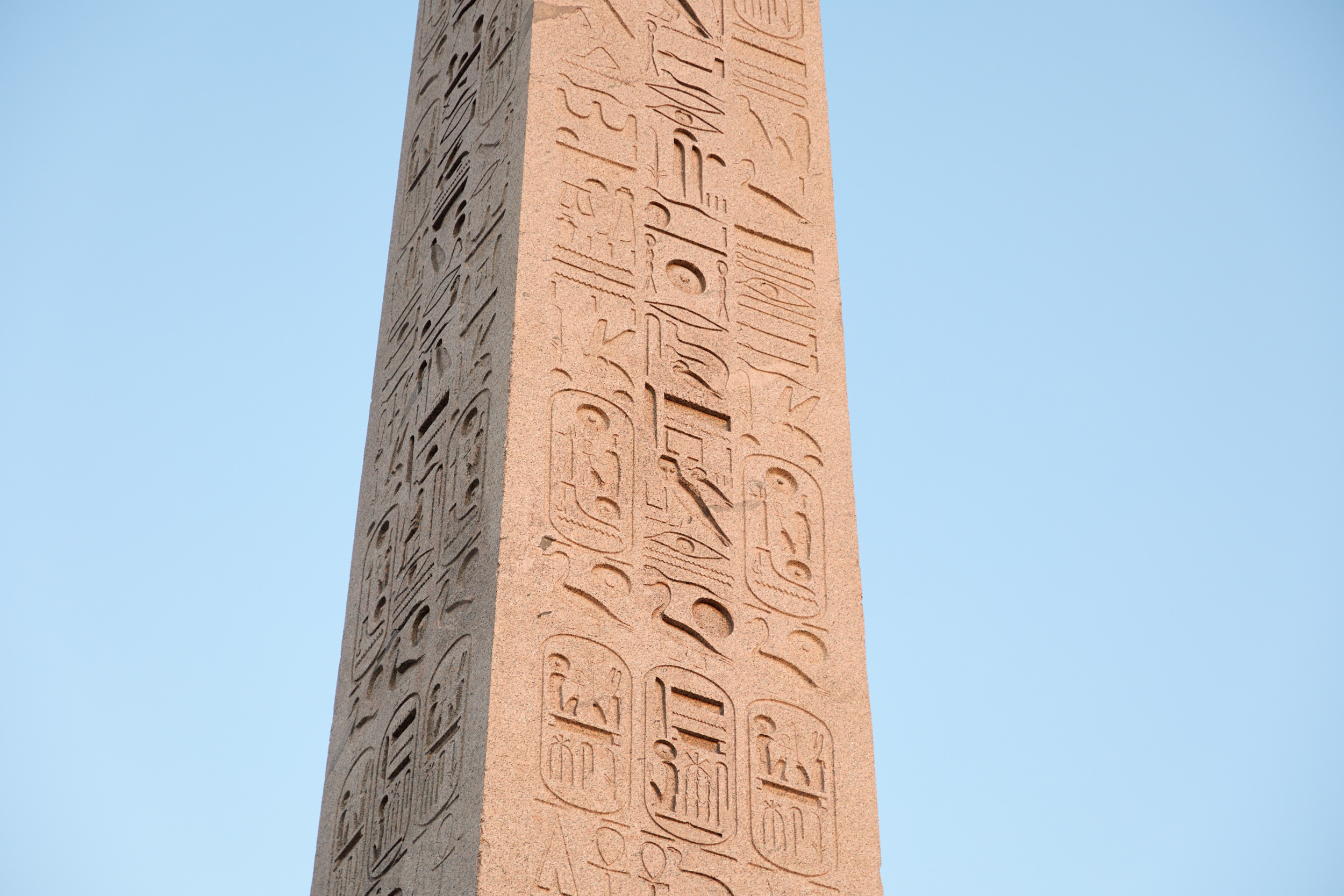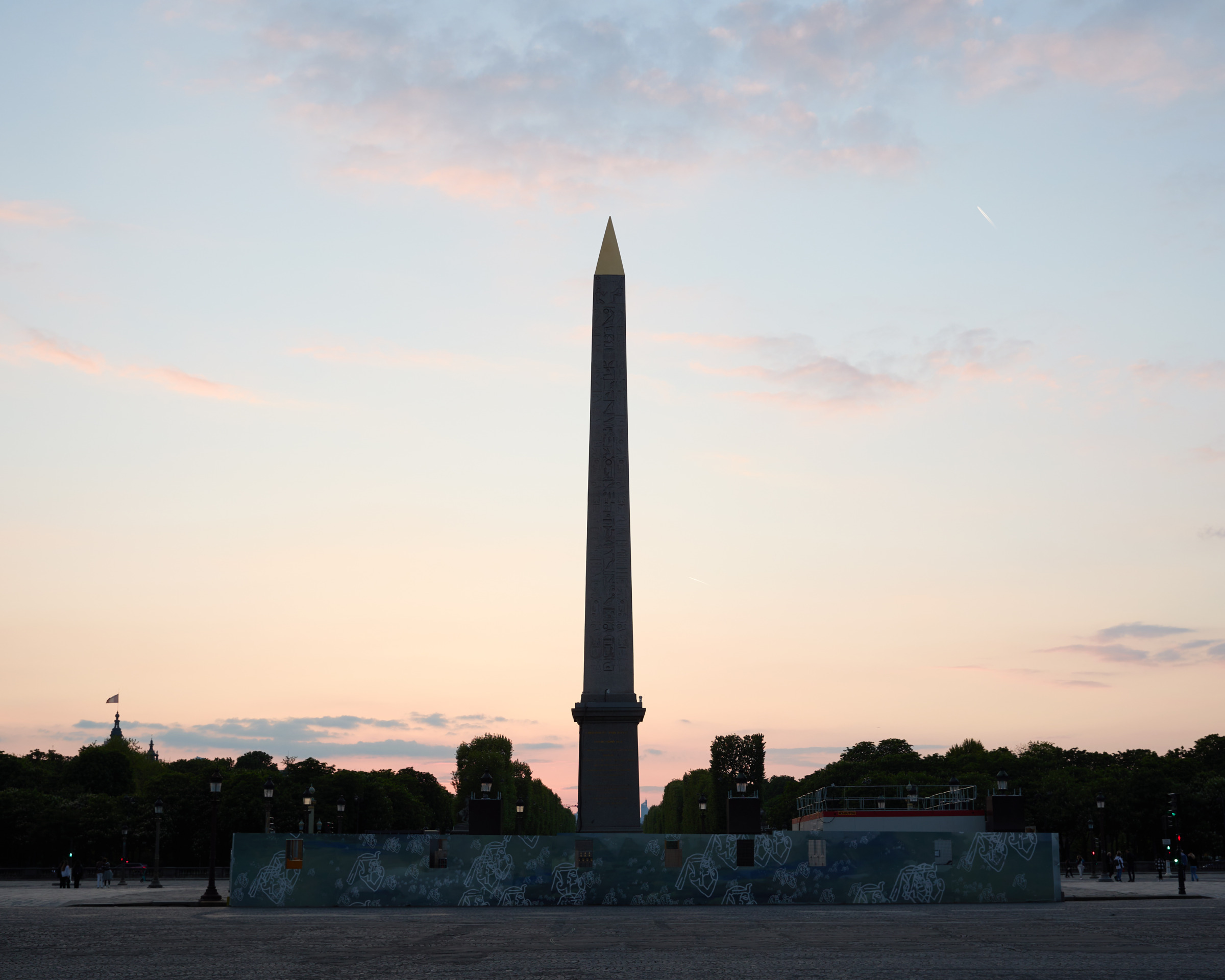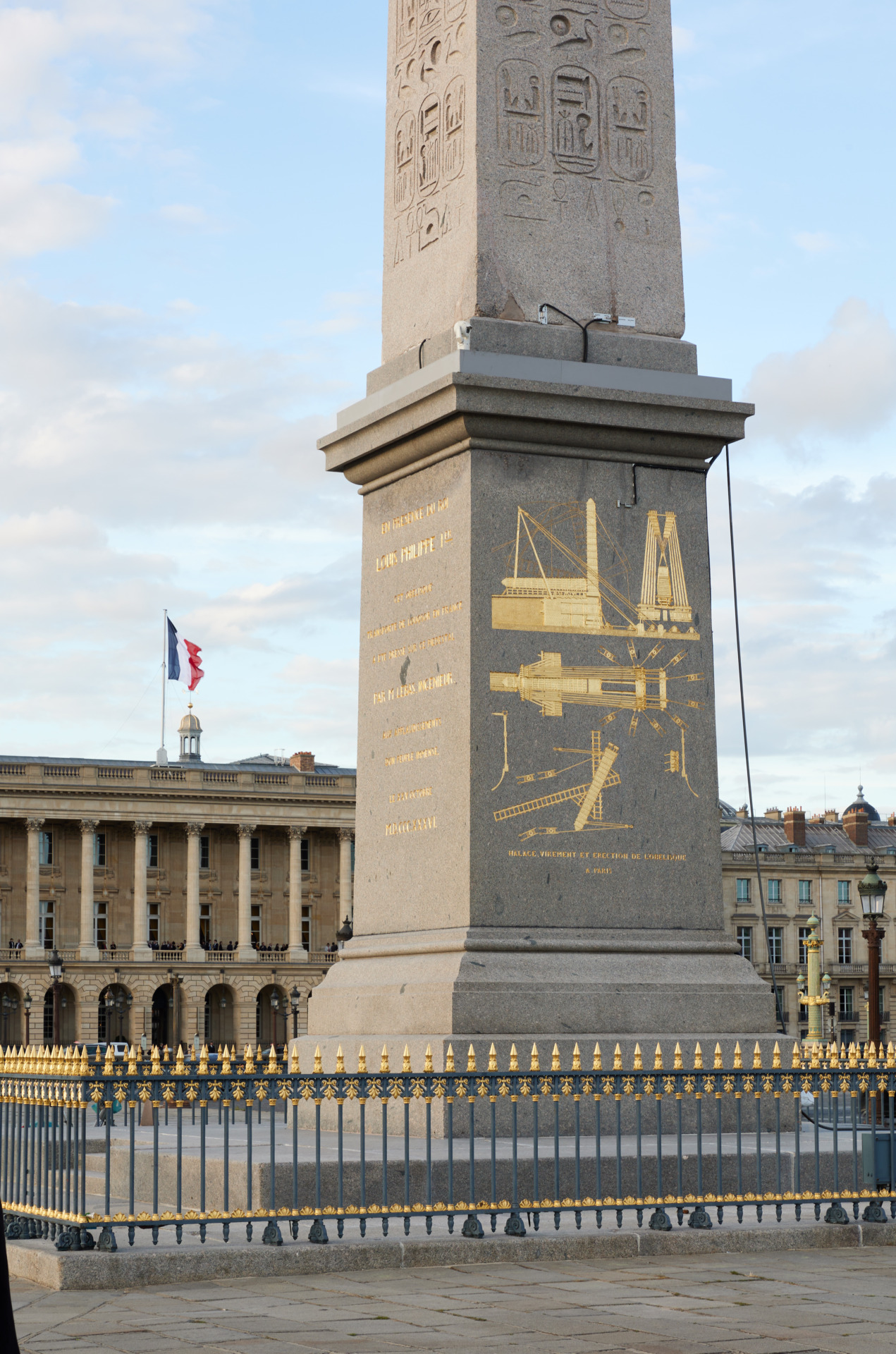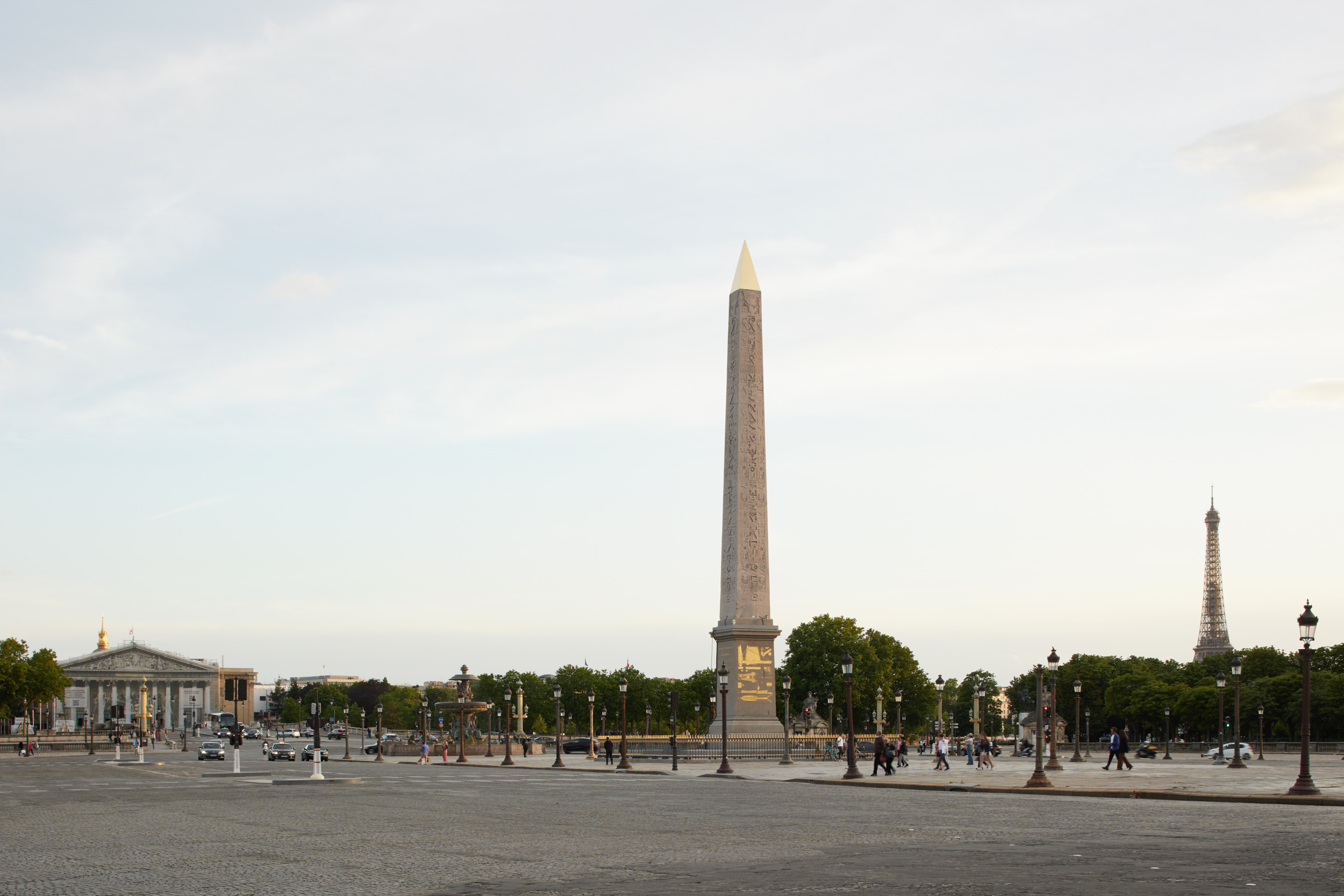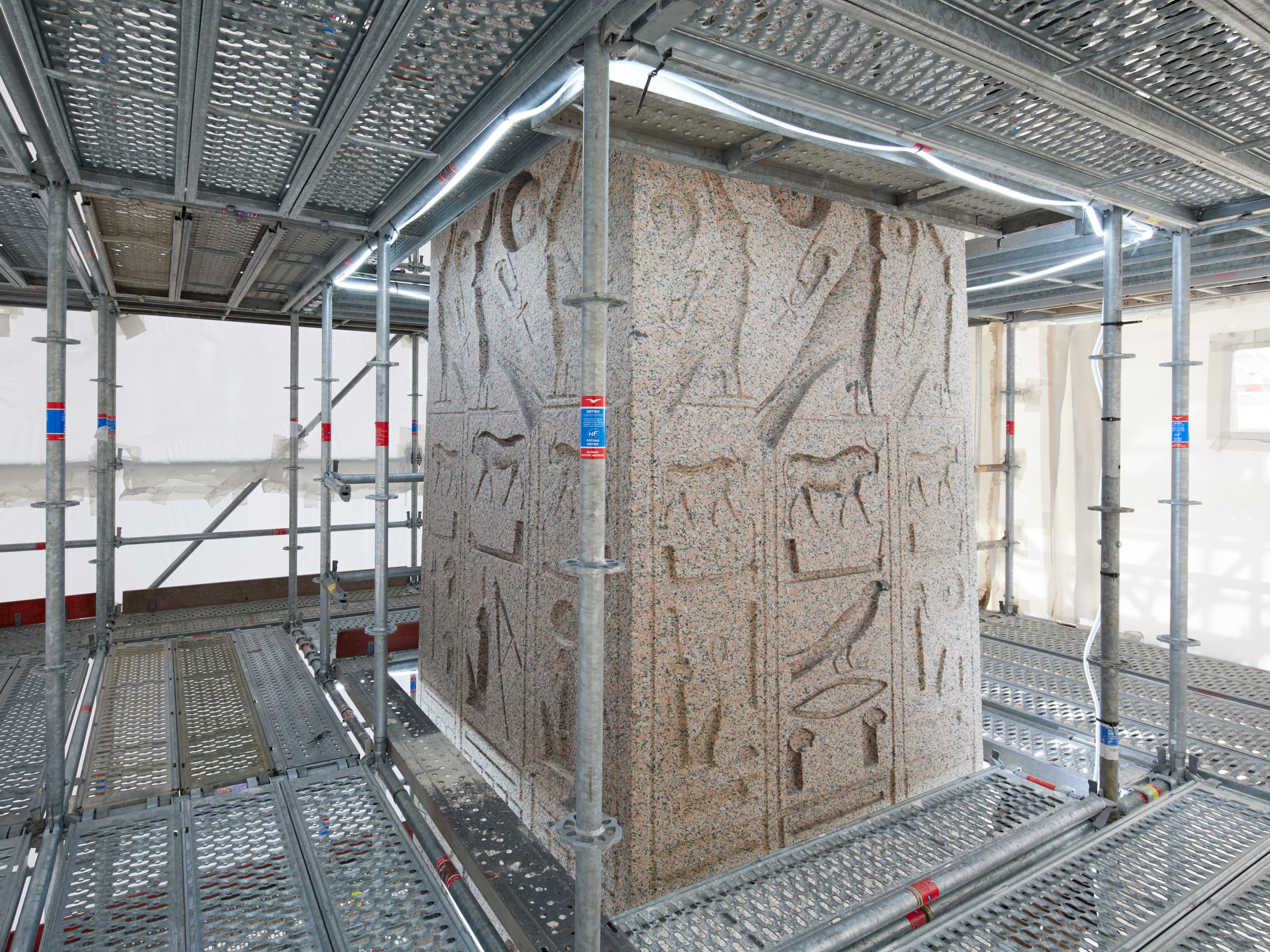The obelisk was given to France by the Viceroy of Egypt, Mehemet Ali, in 1829 in recognition of the work of Jean-François Champolion for the deciphering of hieroglyphics. It was one of a pair of obelisks that were positioned at the entrance of the Temple of Amun in Luxor, but of which only the one currently in Place de la Concorde was transported to Paris, representing a substantial technical achievement. Erected in 1836 in a particularly emblematic location of the capital, at the initiative of Louis Philippe, the Luxor Obelisk is a symbol of the strong ties between Egypt and France. Carved in the 13th century before our era, the monolith is 23 metres high and weighs 222 tons, to which must be added the 240 tons of the pedestal. It is made of Aswan pink granite very low in quartz.
LUXOR OBELISK
RESTORATION OF THE OLDEST MONUMENT IN PARIS
The restoration of the Luxor Obelisk marks the beginning of the bicentenary commemorations to celebrate the deciphering of hieroglyphics by Jean-François Champollion.
The State’s scientific and technical control performed on the Luxor Obelisk by the Historical Monuments Research Laboratory (LRMH) aimed at validating restoration protocols, especially with regard to cleaning. Previous inspections had shown that restoring the monument involved more than just cleaning and required further procedures to ensure the strict preservation of the damaged and flaking outer surfaces. The Kärcher company, a long-standing sponsor with significant expertise in the restoration of historical monuments, offered to provide a skills-based sponsorship for the restoration of the Luxor Obelisk.
In 2021, we were commissioned to restore the monolith, its pedestal, its podium and the enclosing fence. The intervention comprised a phase to consolidate the monolith's flaking surfaces and a cleaning process adapted to the different materials that make up the monument. To restore the flaking surfaces of the monolith, altered by the harsh environment of Paris, a "surgical" operation was also required to consolidate the surface using silicate products designed to bring back the natural matrix cohesion of the Aswan granite. In addition, the cracks and large original fracture found on the monolith were treated with syringe-injected grout and micromortars, also of silicate origin, to ensure that the products were chemically compatible with the granite.
The podium, made of granite from Brittany, was steam cleaned and sand-blasted, using very fine sand under high pressure to remove the ingrained dirt. The Brittany granite pedestal was only steam cleaned to remove micro-organisms. The 32-carat gold pyramidion was cleaned and entirely re-gilded with gold leaf. The spikes and locking system of the enclosing fence were refurbished. The paved floors were repointed. Thanks to the restoration, both Parisians and tourists are now able to rediscover one of the most important monuments in the history of Paris in its best light.
